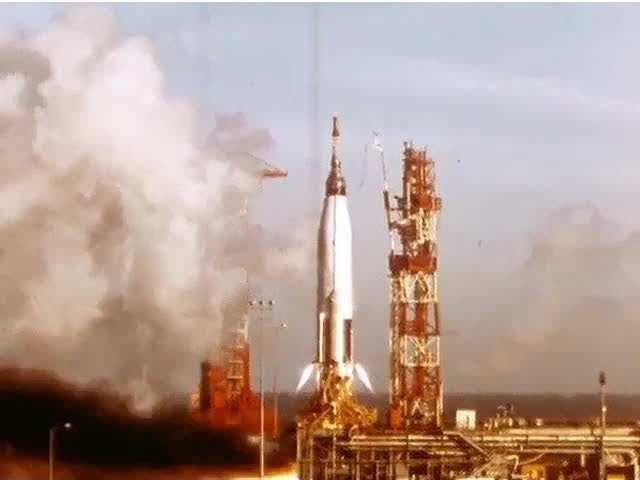1960. An overview Project Mercury, filmed before the launch of the first manned mission – incredible color archive footage shows early testing of key designs & systems, the astronauts, flight mission control center, launch and recovery of unmanned Mercury capsule, “Little Joe” tests, launch of Mercury capsules with monkeys, testing of the emergency escape tower rocket, assembly of boosters, and test firing of Atlas boosters. Project Mercury was the first human spaceflight program of the United States. It ran from 1959 through 1963 with the goal of putting a human in orbit around the Earth and do it before the Soviet Union as part of the early space race. In the first Mercury mission on 5 May 1961,[Alan Shepard became the first American in space; however the Soviet Union had put Yuri Gagarin into space one month earlier. John Glenn became the first American (third overall, following Gagarin and Titov) to reach orbit on February 20, 1962, during the third manned Mercury flight. The program included 20 unmanned launches, followed by two suborbital and four orbital flights with astronaut pilots. Early planning and research were carried out by the National Advisory Committee for Aeronautics (NACA), but the program was officially conducted by its successor organization, NASA. It also absorbed the USAF program Man In Space Soonest which had had the same objectives. Mercury laid the groundwork for Project Gemini and the follow-on Apollo moon-landing program.
Project Mercury

